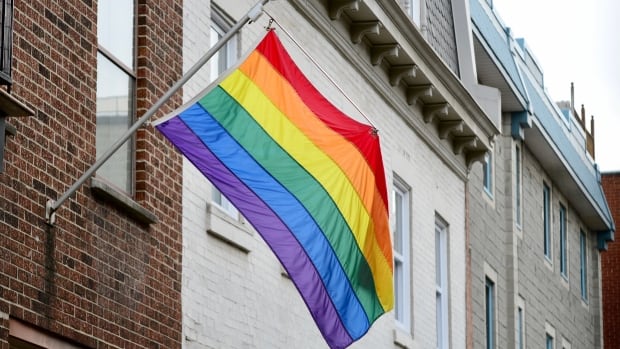

Canada is now home to about one million people who identify as members of the LGBTQ community, with people under the age of 25 accounting for a disproportionately large share of the LGBTQ population.
That’s according to a new report by Statistics Canada which seeks to paint a “statistical portrait” of the country’s LGTBQ population in recognition of Pride month.
The data, which Statistics Canada has been collecting since 2003, show that Canada’s LGBTQ population is skewed heavily toward young people.
Around 30 per cent of LGBTQ Canadians are between the ages of 15 and 24 — an age group that accounts for just 14 per cent of the non-LGBTQ population.
Only seven per cent of Canada’s LGTBQ population is 65 or older. People in the same age group make up 21 per cent of the non-LGBTQ population.
The report details a number of momentous developments and legal changes that have affected the lives of LGBTQ Canadians since the start of the 21st century, including the legalization of same-sex marriage and new protections for gender identity and expression written into the Canadian Human Rights Act.
Statistics Canada says those policy changes contributed to the growth in the number of same-sex couples. From 2006 to 2016, the number of same-sex couples in Canada grew by 60.7 per cent.
“This increase may be reflective, at least in part, of growing awareness and acceptance of sexual diversity in Canada,” said the report.
Hate crimes and economic vulnerability
But while many trends suggest Canada’s LGBTQ population is growing, the report also cites threats facing LGBTQ Canadians — such as the recent spike in hate crimes targeting people for their sexual orientation.
In 2019, police reported 263 such incidents, a 41 per cent increase over the previous year and the highest total since 2009.
Violent crimes accounted for more than half of those reported incidents.
LGBTQ Canadians also may have experienced more economic hardship during the COVID-19 pandemic than non-LGBTQ people, the report said.
People in the 15 to 24 age bracket experienced the largest number of job losses of any group during the pandemic. Since that group accounts for such a large share of the LGBTQ population, “it is likely that [LGBTQ] Canadians may be disproportionately affected by job loss during the pandemic,” the report says.
People who identify as LGTBQ also have lower average annual incomes than non-LGBTQ Canadians — $39,000 versus $58,000. That discrepancy could be explained in part by the fact that the LGBTQ population includes a large number of young people, who typically are not high-earners.
Statistics Canada is pledging to improve its reporting on the country’s LGBTQ population and to pay more attention to transgender people.
The 2021 census included for the first time a question about the respondents’ “gender” in addition to their sex at birth, which could help capture the number of Canadians who are transgender.
“This two-step approach will allow Statistics Canada to have reliable data on the trans population, including the gender non-binary population, and to help address information gaps about gender diversity in Canada,” the report says.